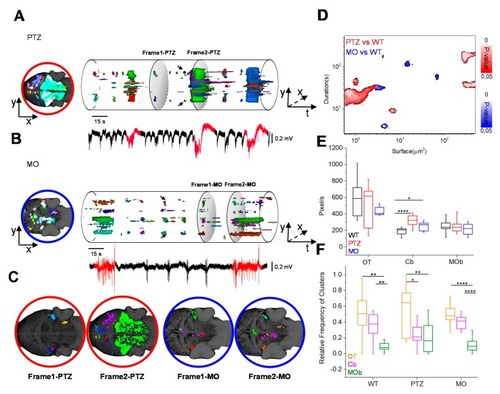Figure 2
- ID
- ZDB-FIG-200423-67
- Publication
- Cozzolino et al., 2020 - Evolution of Epileptiform Activity in Zebrafish by Statistical-Based Integration of Electrophysiology and 2-Photon Ca2+ Imaging
- Other Figures
- All Figure Page
- Back to All Figure Page
|
Dynamic evolution of the Ca2+ domains. ( |
| Fish: | |
|---|---|
| Condition: | |
| Knockdown Reagent: | |
| Observed In: | |
| Stage: | Day 5 |

